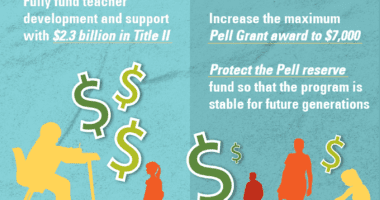College Board Aims to Increase Equity, But Can’t Do It Alone
By moving away from obscure vocabulary lists and a scattered assortment of math topics, the College Board’s new SAT aims to more directly tie the assessment to what students are being asked to do in school. The College Board will also provide resources to help students learn those skills. But for these changes to really make a difference, the college-ready proficiencies emphasized on the SAT must also be taught rigorously and authentically in schools.
By focusing more on the academic skills that most contribute to college readiness and less on test-taking strategies learned through expensive prep programs, some of the inequities that have traditionally plagued low-income students on the SAT could be moderated. Ideally, students would no longer need to rely on costly test prep to study for the exam. But even if test preparation remains prevalent, the College Board has partnered with Khan Academy to offer a free online practice program that all students will be able to access.
But test prep must supplement, not supplant, a solid foundation in critical thinking, literacy, and math. If low-income students are to actually benefit from the assessment changes, schools must rigorously teach the college-ready skills that will be emphasized on the SAT. In the absence of rich in-school instruction, students likely will not internalize or derive broader meaning from a college-ready skillset.
The content-related changes that most reflect the work of schools include:
- A new reading portion that will emphasize the use of text-based evidence, and will include reading passages that are drawn from a wide range of disciplines.
- A list of 1,000 SAT words that will be swapped out for vocabulary more commonly found in college courses.
- A math portion that will focus more narrowly on mathematical reasoning, data analysis, and algebraic topics covered in high school.
The College Board will also institute another programmatic shift, one that will by design help low-income students: It will grant fee waivers to all low-income students to apply to four colleges at no cost, thereby removing an additional, oft-cited barrier to college.
By changing the metric we use to measure college readiness and providing additional supports, these changes have the potential to positively impact inequities in college access.












